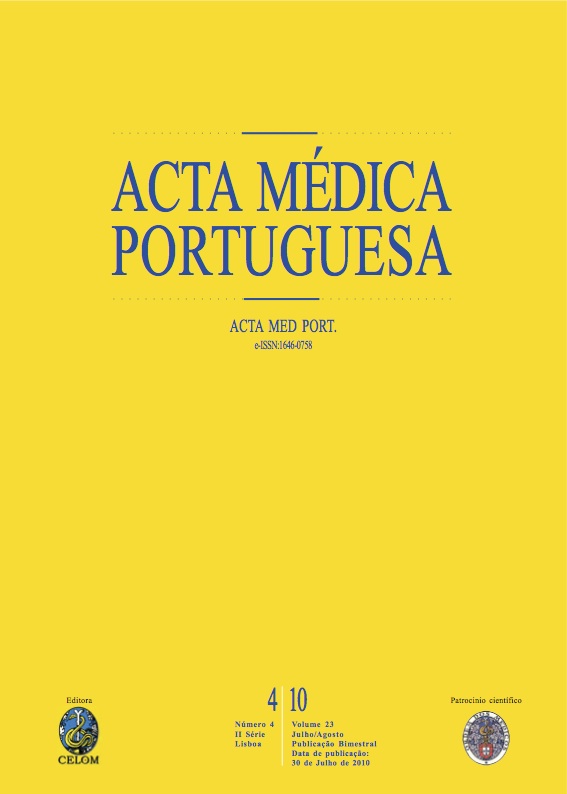Association of gamma glutamyltransferase, metabolic syndrome and cardiovascular risk.
DOI:
https://doi.org/10.20344/amp.699Abstract
Serum gamma-glutamyl transferase (GGT) has been used as a marker of alcohol induced liver disease. Recent epidemiology and pathology studies have suggested its independent role in the pathogenesis and clinical evolution of cardiovascular diseases (CVD) promoting atherosclerosis through an oxidative process leading, within the atherosclerotic plaque, to LDL oxidation, metalloproteinase activation, cell proliferation and apoptosis. Besides it is known that GGT levels rise even in the normal range, with obesity and hepatic steatosis occurs, it is thought, which originates insulin resistance (IR). Being sure that IR is important in the development of type 2 diabetes and CVD, both very prevalent in Portugal, the authors considered as relevant to study the association of GGT with markers of multiple metabolic derangements: insulin-resistance (hyperinsulinemia, hyperglicemia, IR-HOMA = 3), obesity and dyslipidemia. So, a Portuguese sample population, consisted of 123 subjects (52 male and 71 female) was organized. As results were observed: elevation of GGT serum levels with the increasing risk of every marker and the same happened with metabolic syndrome and its components; compared with non obese the group of obese subjects exhibited elevated prevalence of risk factors, though in non obese subjects the percentages of insulin-resistance and dyslipidemias were high (hypercholesterolemia in both sexes, hypertriglyceridemia and low concentrations of HDL-c in men); association of serum GGT levels with every risk factor and metabolic syndrome. Though, as the association with the insulin-resistance state was particularly strong, it is thought that a high prevalence of non-alcoholic fatty liver disease (NAFLD) was present in the studied population. As serum determination of GGT activity is a low-cost, highly sensitive, accurate and frequently used laboratory test and there is association of this enzyme with the most important risk factors of diabetes type 2 and CVD, its serum levels should be considered as a marker of insulin-resistance when NAFLD is supposed to be present or there is obesity.Downloads
Downloads
How to Cite
Issue
Section
License
All the articles published in the AMP are open access and comply with the requirements of funding agencies or academic institutions. The AMP is governed by the terms of the Creative Commons ‘Attribution – Non-Commercial Use - (CC-BY-NC)’ license, regarding the use by third parties.
It is the author’s responsibility to obtain approval for the reproduction of figures, tables, etc. from other publications.
Upon acceptance of an article for publication, the authors will be asked to complete the ICMJE “Copyright Liability and Copyright Sharing Statement “(http://www.actamedicaportuguesa.com/info/AMP-NormasPublicacao.pdf) and the “Declaration of Potential Conflicts of Interest” (http:// www.icmje.org/conflicts-of-interest). An e-mail will be sent to the corresponding author to acknowledge receipt of the manuscript.
After publication, the authors are authorised to make their articles available in repositories of their institutions of origin, as long as they always mention where they were published and according to the Creative Commons license.









